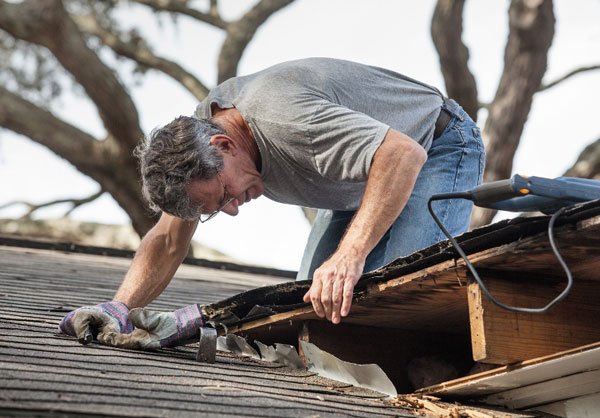
04 Sep Our Roofing Experts Share 3 Common Areas to Inspect for Leaking
When you think of roofing repairs, broken shingles and fallen tiles may come to mind. However, one of the most severe roofing problems is leaking. Sure, a droplet here or there may not seem threatening. But give it an hour and you’ll have enough to fill a trash can. Leaking can lead to watermarks, peeling paint and bug invasion. And, if left untreated can run the risk of wood rot and mold growth.

1. Flashing
Flashing is a thin piece of metal located under your shingles. Flashing works with your roofing joints to create a water-resistant barrier to the elements. As time goes on and Florida experiences rain and hurricanes, these pieces of metal have a tendency to crack after long exposure. When this happens, water has the ability to seep into areas of your home.
2. Skylights
Another area of your home our roofing experts recommend inspecting is skylights. Most often, skylights experiencing leaking water can be drawn from two major causes:
- Improper measuring and/or fitting
- Decayed insulation
The first cause is one of many reasons why it’s important to treat your roof like an investment. Settling on a traveling roofing company because of price won’t always guarantee a quality job. If measurements or taken improperly or they recommend the wrong (ill-fitting) windows, you may be paying more out of pocket later in repairs.
As for the second cause, you can inspect for decayed insulation around the edges of the skylights. If you notice either issue, we recommend replacing it with a surface-mount, single-piece glass skylight. This skylight is made where the metal flashing and lens are welded together — so, no moving parts. With this style of a skylight, there’s a lot less potential for leaks and cracking.
3. Chimneys
The third and perhaps most common area to inspect for leaking is the chimney. They’re known for developing leaks and can get out of control quickly if ignored. Chimneys are made of multiple components, which heightens the risk for a leak. These include the singles, flashing pieces that connect the roof and chimney wall, the stucco or siding surface of the chimney itself, and even chimney and flue caps.
Unfortunately, a hairline crack in a crucial place can put your roof at risk for running water behind flashings. To inspect your chimney, look for soldered corners of flashing that might have broken or have holes. Our team at Universal Roofing would also be happy to coordinate with your chimney or masonry inspector, just give us a call at (407) 295-7403.
Wondering how long roofs last in Florida specifically?
In our free ebook, our roofing experts share five more factors to inspect for damage, three ways to extend the life of your roof and more!




